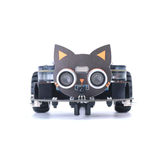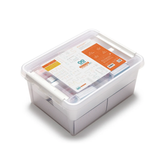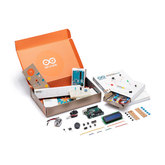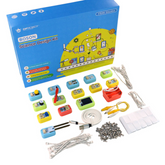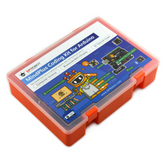Stem For Kids - Robotics for Kids
Introduction
STEM, an acronym for Science, Technology, Engineering, and Mathematics, encompasses the interrelated academic disciplines focused on applying scientific principles and technology to solve real-world problems. In recent years, STEM education has become a priority in schools across the nation. The modern digital economy demands workers who possess strong capabilities in areas that STEM aims to foster: critical thinking, complex problem solving, computational skills, scientific literacy, and innovation. Integrating STEM in engaging, hands-on ways gets students excited about learning these topics.
One of the most dynamic and engaging ways to teach core STEM principles is through robotics education. Robotics involves the design, construction, operation, and applications of robots. Robots are machines capable of carrying out complex series of actions automatically, via electronic programming and mechanical construction. Robotics integrates principles from computer science, electrical engineering, mechanical engineering, and math. By constructing and programming robots, students have the opportunity to utilize their skills in STEM disciplines in an interactive, applied setting.
From self-driving vehicles to robotic planetary exploration to artificial intelligence, robotics is impacting every facet of society. Introducing students to robotics during their K-12 education taps into their natural curiosity while equipping them with valuable technical skills. Robotics provides an exciting hands-on introduction to STEM fields, aimed at building a strong foundation for their future academic and career pursuits.
What is Robotics?

Robotics is an interdisciplinary field which integrates principles of computer science, electrical and mechanical engineering, mathematics, and other STEM disciplines in order to design, construct, and operate robots. While early pioneers began experimenting with automated machines and artificial beings centuries ago, robotics emerged as a formal field of engineering and science in the 20th century.
The technical definition describes robotics as the branch of technology devoted to the design, manufacture, application, and control of robots. This involves developing and implementing algorithms, programming languages, sensors and actuators that enable robots to perceive their environment, make decisions based on input, and take physical actions. Roboticists create automated machines that can replicate or substitute for human actions. From welding car parts on an assembly line to vacuuming floors in homes to exploring the surface of Mars, robots carry out a diverse range of functions.
Robotics brings together knowledge from electronics, physics, material science, structural engineering, locomotion science, manufacturing, mathematics, computation and more to create capable and autonomous robots. Drawing heavily on computational systems for sensing, control, feedback, and information processing, robotics provides endless opportunities to apply computer science to the physical world.
Kids encounter examples of robots functioning independently in everyday life, from Roomba vacuums that intelligently clean floors to Pepper humanoids able to interpret and express emotions via body language. These demonstrate just a fraction of robotics capabilities made possible by the convergence of mechanical engineering, electrical engineering, computer science, and advancements in artificial intelligence.
Benefits of Robotics for Kids

Incorporating robotics into children's education offers numerous benefits that extend far beyond just learning about technology. Some of the key advantages robotics provides students include:
check out the best collection of Stem Kits for Kids.
Critical Thinking and Complex Problem Solving
Designing, building, programming, and troubleshooting robots involves identifying problems, analyzing systems, applying logic and reasoning skills, and thinking through solutions creatively. This strengthens computational thinking abilities and real-world problem solving skills.
Creativity and Imagination
Designing innovative robot constructions and programming them to carry out unique functions fosters creative thinking. Robotics is an open-ended platform for students to bring their ideas to life.
Teamwork and Communication
Hands-on robotics activities teach effective teamwork, leadership, project management, and communication skills. Collaborating to construct robots requires cooperating, division of responsibilities, and articulating ideas.
Technical Skills
By working directly with electronics, 3D modeling software, robot operating systems, and programming languages, students gain first-hand exposure to real-world applications of STEM. Kids master practical technical abilities through creating robots.
Excitement for STEM Learning
Assembling functioning robots ignites students' passion for understanding the science, math, engineering, and coding principles that make them work. Robotics provides a fun and engaging environment for STEM discovery.
Career Exposure
The multidisciplinary nature of robotics gives students insight into how academic concepts connect to real-world technical careers. Kids are inspired and equipped to pursue futures in programming, electrical engineering, mechanical engineering, and more.
Check out our RC Car Kit collections that include chassis, wheels, tires, motors, batteries, and other components such as a steering system, brakes, and electronics.
Getting Started with Robotics

The great news is that robotics is more accessible than ever for beginners of all ages to pick up. Here is an overview of options to dive in:
Tips for Getting Started
New robotics enthusiasts should:
- Carefully follow included build/programming guides
- Start with simpler builds before modifying/expanding
- Slowly increase programming complexity in iterations
- Seek mentorship and technical help when needed
Robotics in the Classroom
Educators recognize that robotics offers a highly engaging method for teaching STEM concepts through active, hands-on learning. The multidisciplinary nature of robotics directly aligns with Common Core math and science standards. Well-designed robotics curriculum programs effectively integrate robotics across grades K-12.
Get the Matatalab VinciBot – The perfect Coding Robot for Kids!
Competitions and Clubs
Robotics competitions like FIRST Robotics and VEX Robotics allow students to apply learning through designing robots for challenges. Afterschool clubs offer time for students to experiment.
Classroom Collaboration
Group robotics projects teach teamwork, communication, responsibility, and conflict resolution, while allowing students to observe how their individual strengths contribute to the end product.
Robotics at Home
Parents can encourage kids' interest in robotics and STEM in a number of ways:
Starter Robot Kits
Affordable intro robot kits like Botzees, Root coding robot, or the MOSS robot mouse allow family STEM time. These screen-free options snap together and can be programmed with buttons, remote control, or tablets.
Online Resources
Self-paced online robotics and coding classes from Tynker, CodeMonkey, and other websites teach programming fundamentals at home. Video tutorials can provide guidance.
Summer Camps
Specialized robotics camps, workshops and classes offered through local schools and community colleges during breaks provide focused learning around robotics, programming, and engineering.
Parental Support
While learning new technical skills, students will need encouragement when facing challenges. Parents can connect them to mentors, robotics competitions, maker fairs, and online groups to gain inspiration and advice.
The Future of Robotics

As supporting technologies continue to advance, robotics will transform society in exciting ways. Here are some near-future trends:
Expanding Applications
Robots will move beyond industrial uses into more public facing roles in sectors like healthcare, retail, restaurants, transportation, security, space exploration, and homes. Integration of smarter capabilities like machine learning and computer vision will enable safer and more independent robot operations.
Career Opportunities
The robotics industry faces a massive talent shortage even as demand for qualified technical workers accelerates exponentially. Students entering STEM fields can look forward to plentiful, well-paying and meaningful robotics careers designing, engineering, programming, and working creatively with innovative technologies.
Technological Transformation
Nearly every industry will be disrupted and reinvented through robotics. Autonomous vehicles will revolutionize transportation. Robotic agriculture will automate farming. Robotic surgeries will enable better precision and outcomes in healthcare. Manufacturing, defense, infrastructure creation, and much more will be upgraded through robotics.
Crucial Future Skills
As robotics and automation handle more routine tasks, skills that are uniquely human will become increasingly vital. Creativity, complex problem solving, collaboration, design thinking, and interpersonal abilities will be critical for students to master.
Conclusion
Robotics provides an exciting, hands-on introduction to STEM concepts that gets students engaged in learning deeply. Constructing, programming, and operating robots teaches computational thinking, teamwork, creativity, problem-solving, technical skills, and communication abilities that are invaluable for children's academic and career futures. Robotics kits tailored for any age and school curriculum programs make integrating robotics easy. As robotics technology advances, students interested in the field have a tremendous opportunity to shape the future with their skills and talents. By nurturing student passion and confidence for robotics and STEM education today, we ensure our youth are prepared to live up to their full potential and bring positive change to our world.





